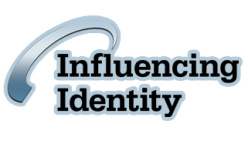By Syndi Seid – a world leading etiquette trainer, celebrity speaker and founder of San Francisco based Advanced Etiquette.

1) Why name tags?
When preparing name tags, consider their purpose. Always show the names in spoken order: your first name followed by your surname and affiliation. To maintain proper etiquette, think twice about the need to provide any information beyond these basics.
2) Writing a name tag
Use only big, bold block letters in all caps or upper and lower case letters. Avoid script or cursive handwriting, and do not add personalized touches that could be confusing. No matter how well lit a room may be, it is always challenging to decipher cursive handwriting, particularly by those from other countries or ethnic origins.
3) Etiquette and using honorifics
Except for specialized events, do not use honorifics and titles on name tags. These include Mr., Mrs., Ms., Dr., PhD, MD, General Manager or President. Because name tags intend to show a person’s identity quickly, they should only indicate first and last surname and affiliation.
4) “Hello, my name is…”
I confess I do not like this particular style of name badge. Admittedly, they do serve a purpose for highly informal occasions. But they seem very elementary and out of place in a professional setting. It is best to use clean, professional looking sheets, with or without colored borders.

5) Squint factor
Nothing is more disappointing than attending a conference or professional meeting only to arrive at check in and discover the name tags are terribly under presented. The names are printed too small, the company affiliation is so small you can not make it out and every other detail, shy of your birth date, is loaded onto the badge.
6) Printing name tags
When generating pre-printed tags on a computer, take care when choosing an appropriate font and font size. I find that 40 point Arial type is a good starting point for first and last names and affiliations for that tags I produce. Sometimes, it takes a little extra time to employ a little trial and error to find the correct font size and balance. However, it will be well worth the effort to achieve the optimum results.
7) Etiquette of using affiliations and logos
Even though it is important to give attention to the sponsoring organization, always remember that the essential information on the name tag is the person’s name, not the organization’s. By this, I mean the bulk of the space should be devoted to presenting the person’s full name. Thus, the scale of the logo or sponsoring affiliation should be much smaller than the attendee’s name. It should never dominate the tag.

8) Printing the first name larger than the last name
While there are no hard and fast rules governing whether to enlarge the person’s first name, I submit it is best to print both the first and last name in the same size font. With so many men and women sharing the same first name, it can be confusing to see a lot of Susans or Stevens walking around. But, again, this underscores the value of regarding one’s full name as one’s personal branding vehicle.
9) Etiquette for using reusable name badge at various events
While arriving with your very own custom designed name tag assures you that you will present your name and affiliation to your absolute liking, it may not be in your best interest. Consider this: event planners usually create name tags specific to a particular occasion to identify, at a glance, those who legitimately belong at the event and those who do not. Unfortunately, wearing a custom name tag you created may inadvertently convey the impression of being a party crasher!
10) Company ID badges
Many companies require staff to wear name badges for instant identification purposes. In this case, wearing such badges on the left shoulder is customary.
11) Placing name tags straight and in plain view
Never allow your name tag to be worn crooked, sideways or even upside down. It sends a negative message to others, usually implying a lack of respect for the occasion or a lack of care or interest in your personal appearance.
Never wear a badge upside down. Though it may sound silly, believe it or not, I know someone who deliberately wears his name badge upside down. He claims it is the best way to meet women. Why? Because he says women will go out of their way to approach him to help him correct what they perceive as his oversight. My friend claims men are far less likely to mention it or bother helping. Needless to say, I do not recommend this practice to anyone.
In my book, this tactic sends the signal that here is a person who cares little about the image he conveys. Who would want to convey the impression that they purposefully missed something as simple as adequately wearing a name badge? What else might be missing? In other words, while it is possible that one person may take this for humor, another person may take it as incompetence. Why risk creating this kind of confusion?
12) Last but not least, etiquette on where to wear a name tag.

Always wear your name tag on your upper right shoulder when networking at professional functions or social events. Here’s why. Place the badge as high up on your right shoulder as possible. This will give other people the best and easiest view of both the tag and your face. As you extend your right hand for a handshake, your eye and arm are already drawn to the right side of the person you are greeting. Because the uppermost part of your chest is the flattest area on your shoulder, this helps your tag to lie flat and be more secure.
These points are especially relevant to women, as most women feel awkward drawing attention to an area of our chests we would prefer not to. Placing it in an easy to read and visible place keeps the focus where it should be.
Designing your name tags
Adding credentials of any form to name tags is easy when you shop at www.nametag.com.



